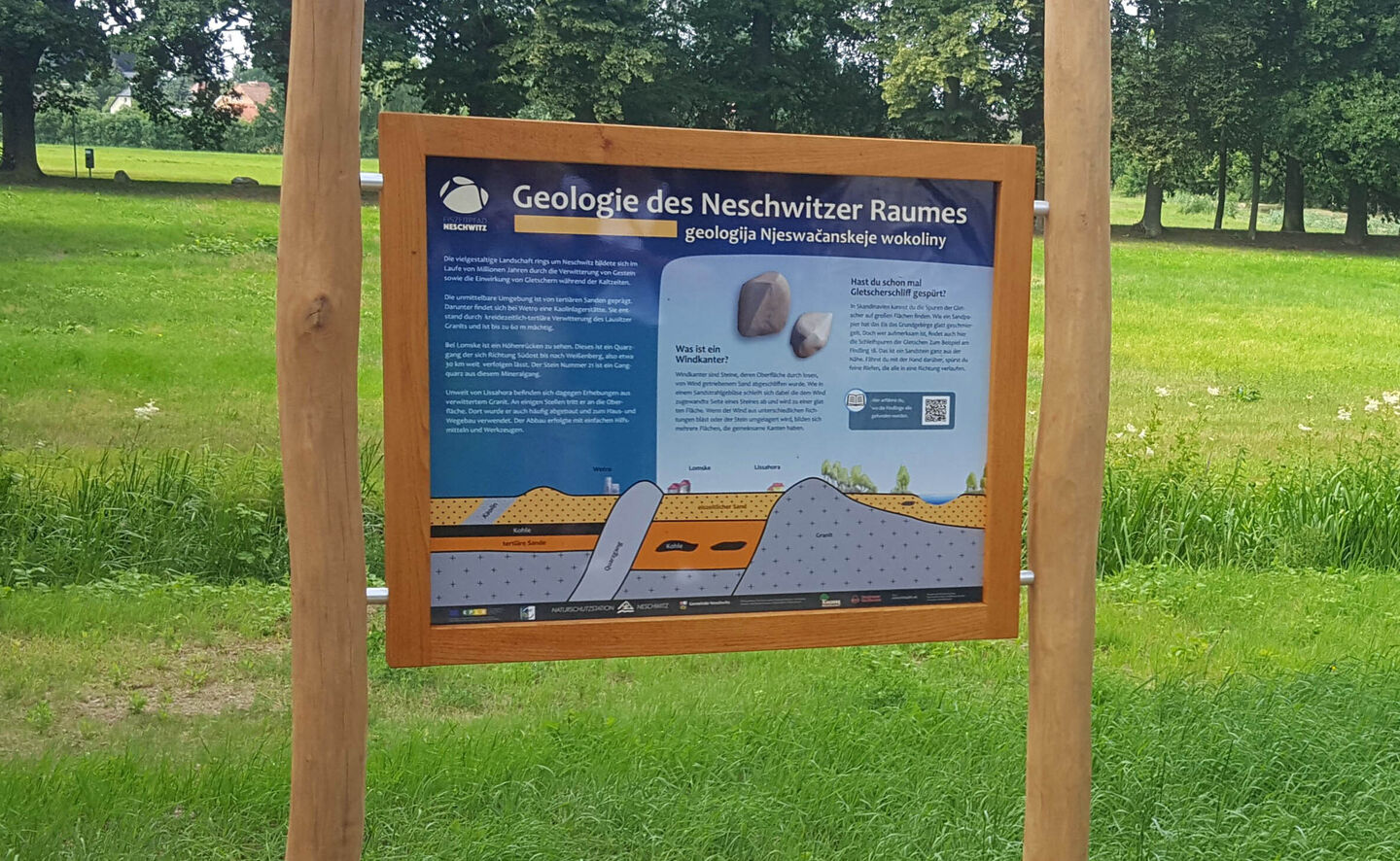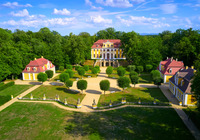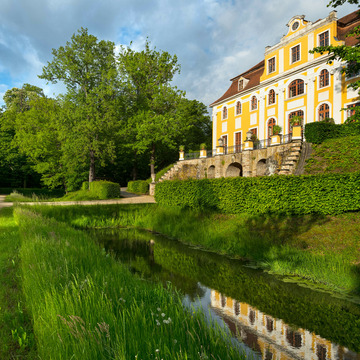Duke Frederick Louis of Württemberg-Winnental had the baroque palace and garden built here between 1721 and 1723 as a hunting lodge for his wife, Princess Katharina of Teschen, divorced Princess Lubomirska (1680–1743). Constructed on the cellar vaults dating from the fourteenth century, it served as a summer residence for the former mistress of Augustus II the Strong and her husband. The Dresden court architect Johann Friedrich Karcher is believed to have designed the baroque gardens. Along with the palace, an estate with a brewery and stabling for some 40 horses, a hunting pavilion and a plant nursery were also built.
From 1886 until 1945, the estate was owned by the von Vietinghoff-Riesch families. Its last owner, the forester and university professor Arnold Oskar Conrad Harry Freiherr von Vietinghoff-Riesch, co-founded Neschwitz bird sanctuary.
The Second World War had a profound impact on the palace park: both the new palace and the collection of orange and lemon trees were destroyed by fire in 1945 and later demolished. The local school was built on the foundation walls in 1952; in recent times, it housed a residential complex for senior citizens. The fourth pavilion – the theatre pavilion – was damaged so severely during the war that it had to be demolished and has not been rebuilt to this day.
The baroque palace and park have been a legal entity since 1945 and in the possession of the municipality of Neschwitz since 1997.
These days, the municipality uses the rooms of the old palace for civil marriage ceremonies, as a concert hall and as rooms for exhibitions on the palace and local history as well as on other changing themes. This revives the former use by the Riesch/Vietinghoff- Riesch family: the baroque palace had served as an art museum with a collection of antiquities and paintings, archives and a library since 1806. A permanent exhibition on the Vietinghoff-Riesch family can be found on the ground floor.
The former bathing and kitchen pavilion features a winter venue for hosting civil marriage ceremonies, the local tourist information centre, the rooms of the local culture and history society (Kultur- und Heimatfreunde e. V.), the offices of the Saxon bird sanctuary (Förderverein Sächsische Vogelschutzwarte e. V.) and the Orangeriecaffée.
The nature conservation station of the district of Bautzen and the Saxon bird sanctuary are housed in the other two pavilions (formerly the archive pavilion and the men's pavilion) and offer visitors a wealth of information. A modern interactive exhibition on bird conservation in Saxony can be explored on the ground floor of the bird sanctuary.



































































